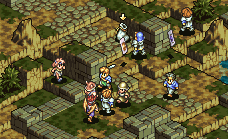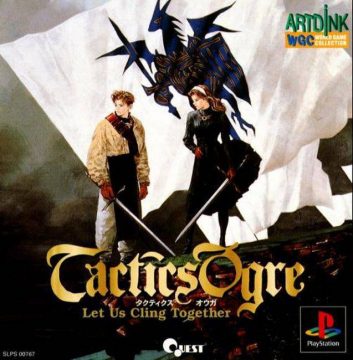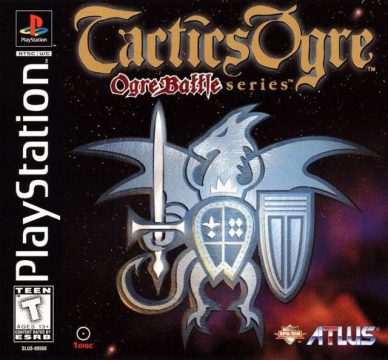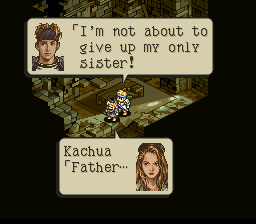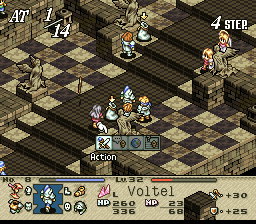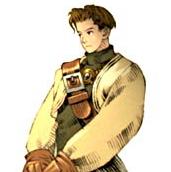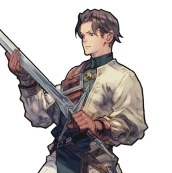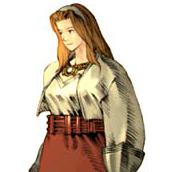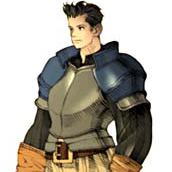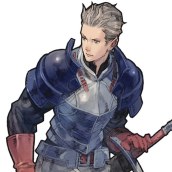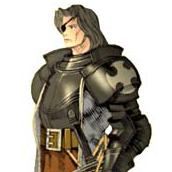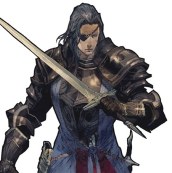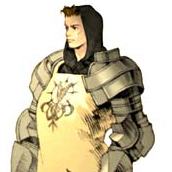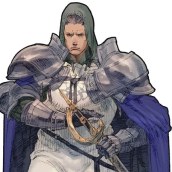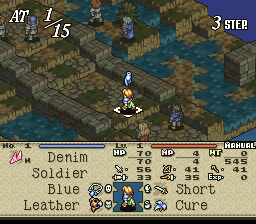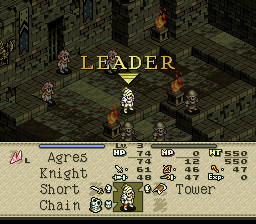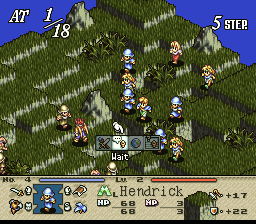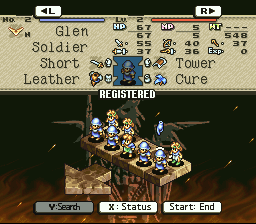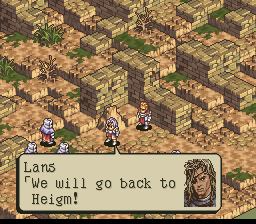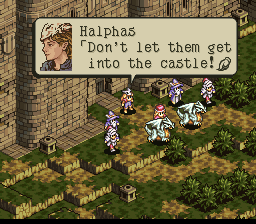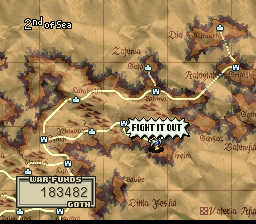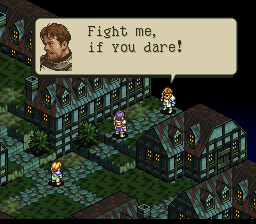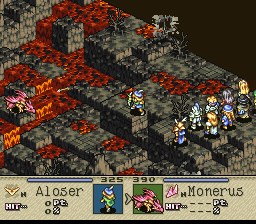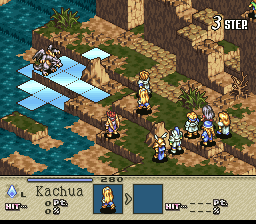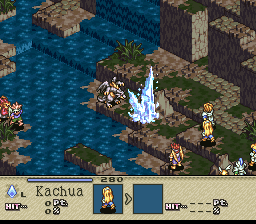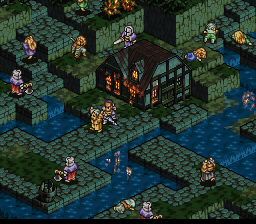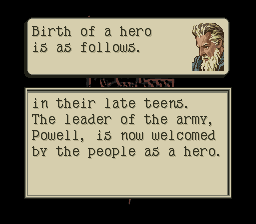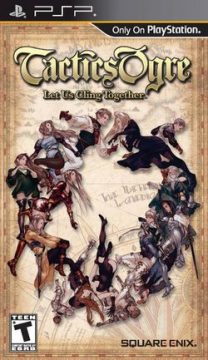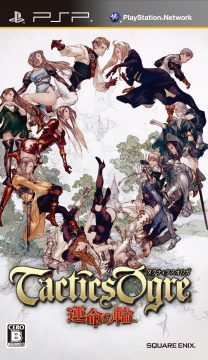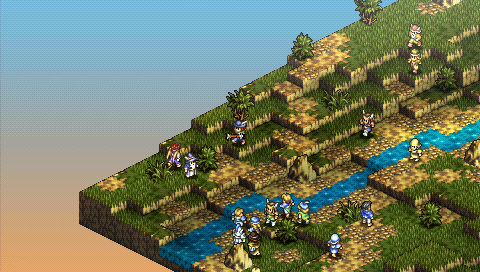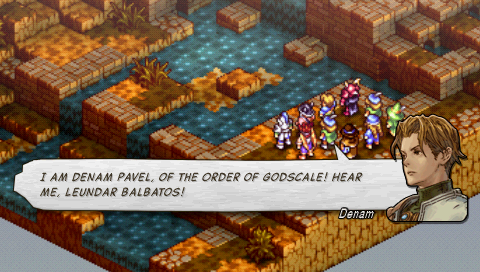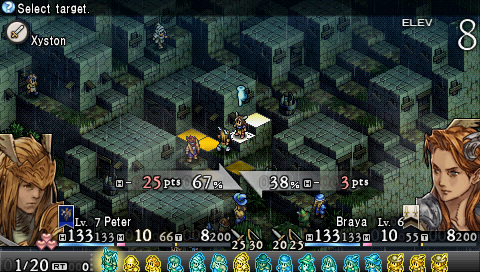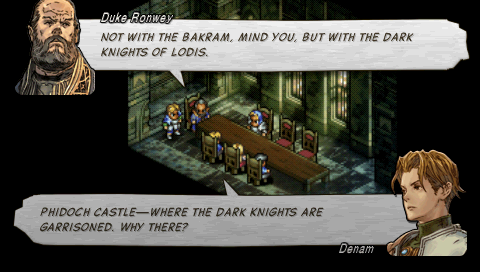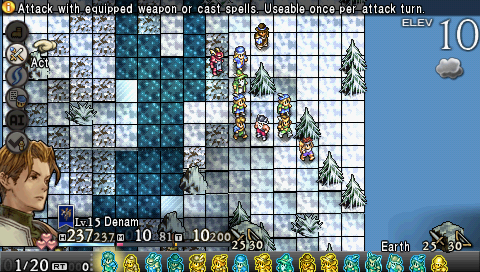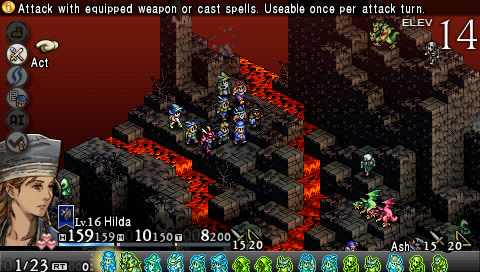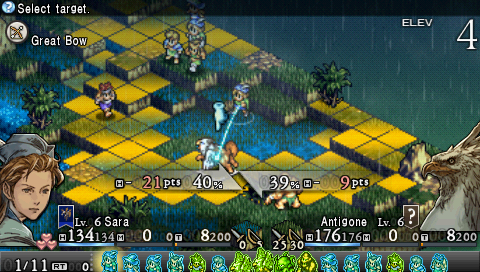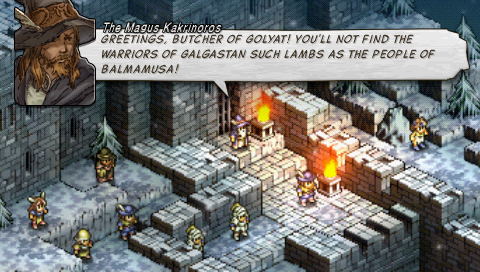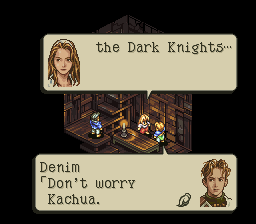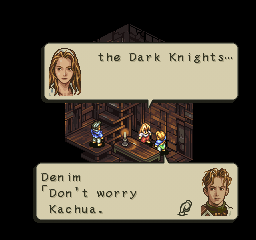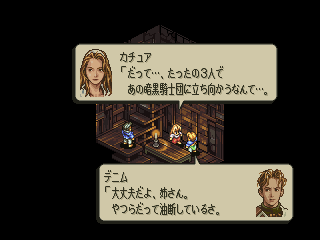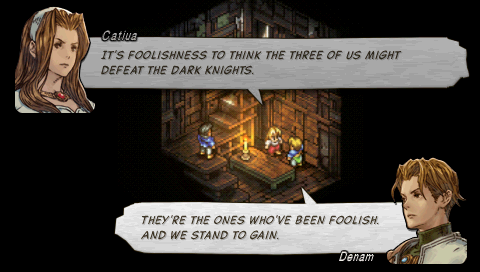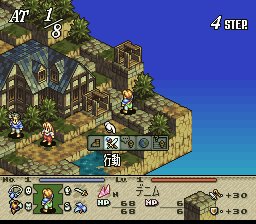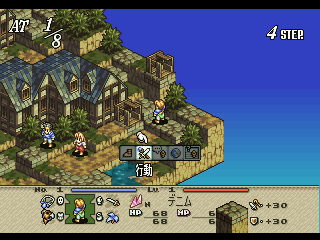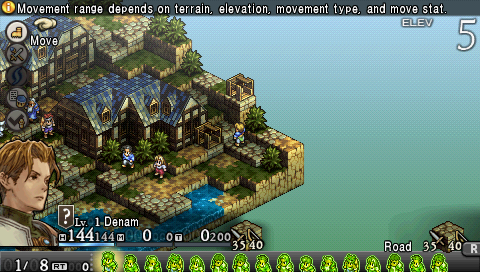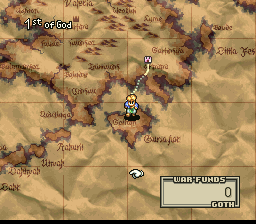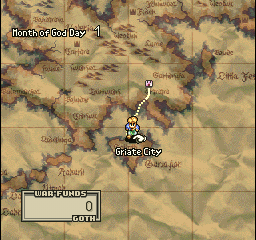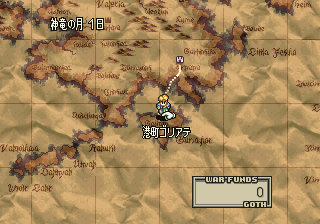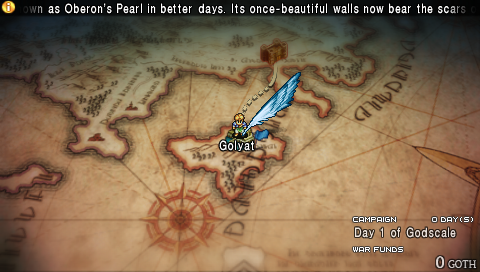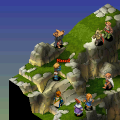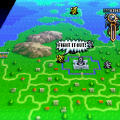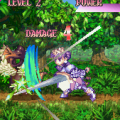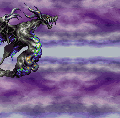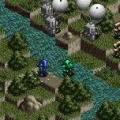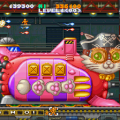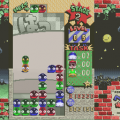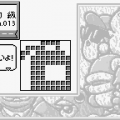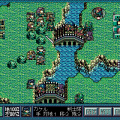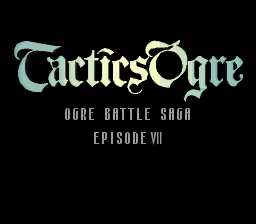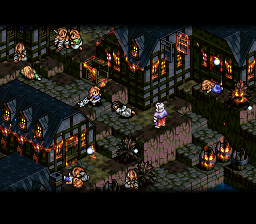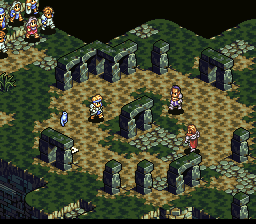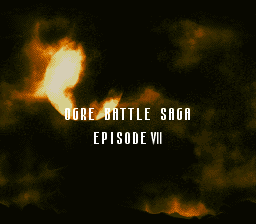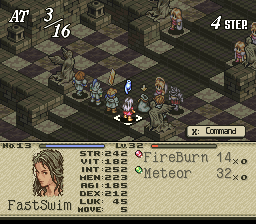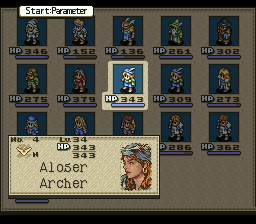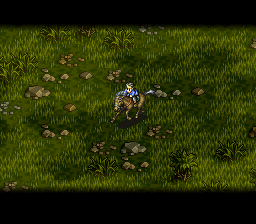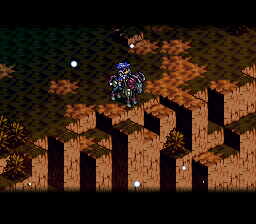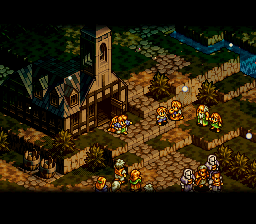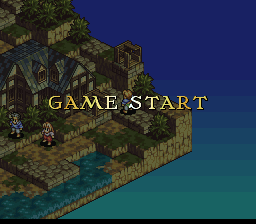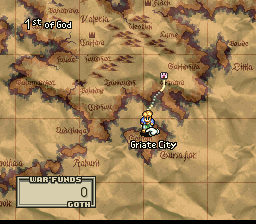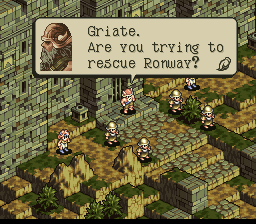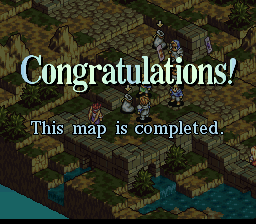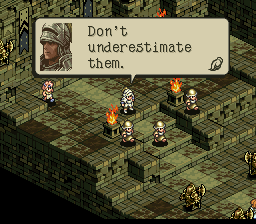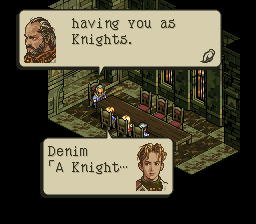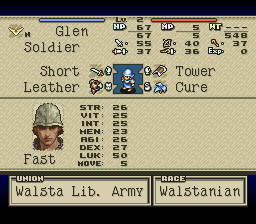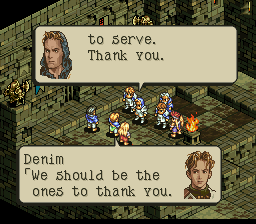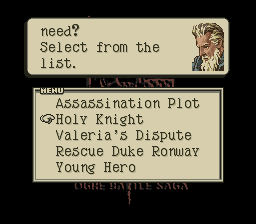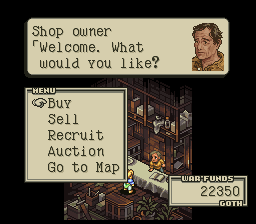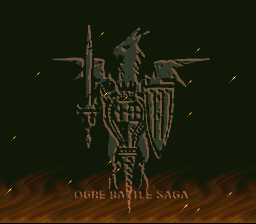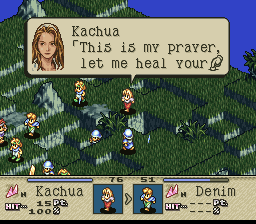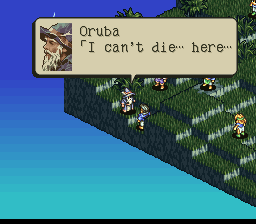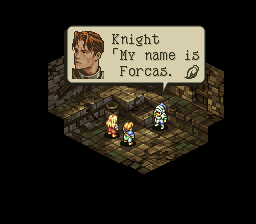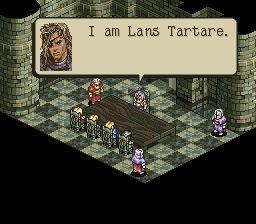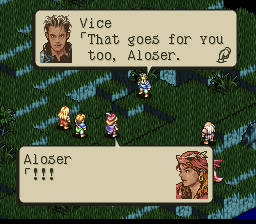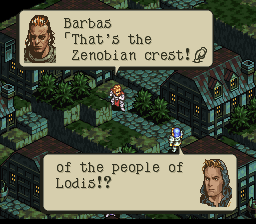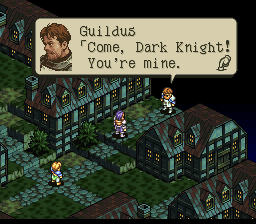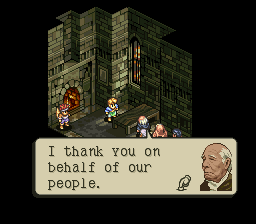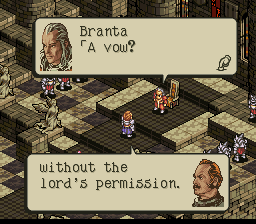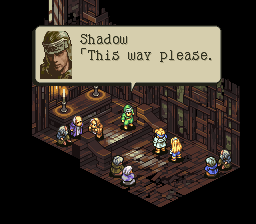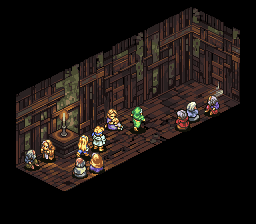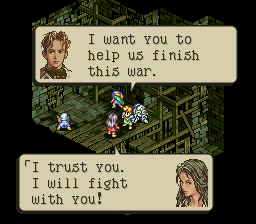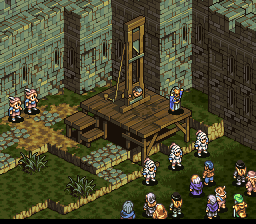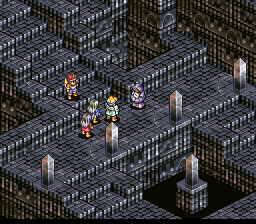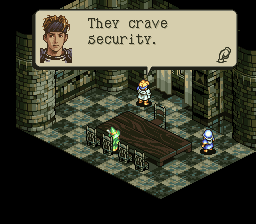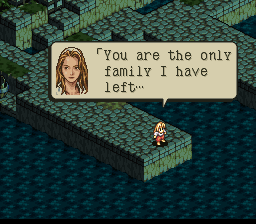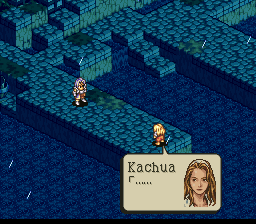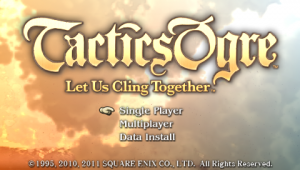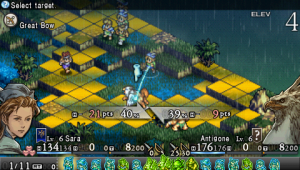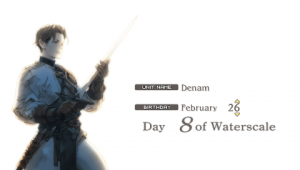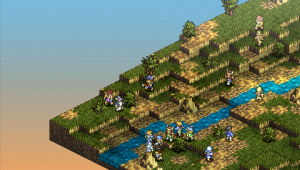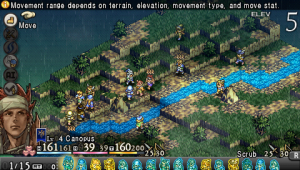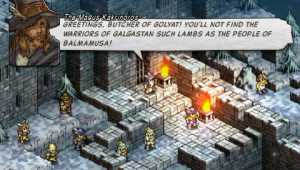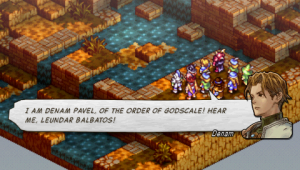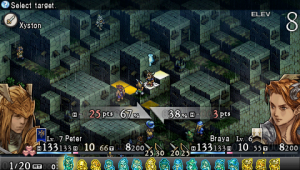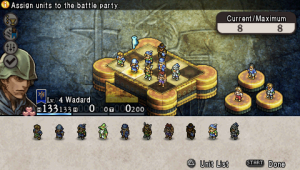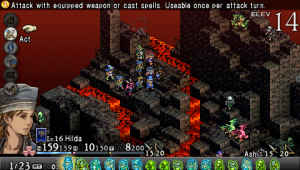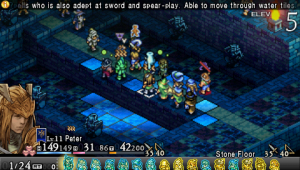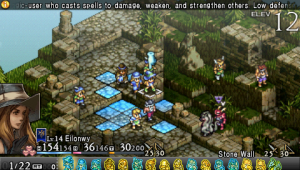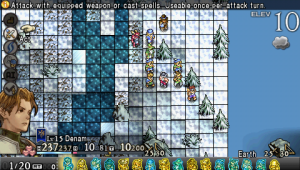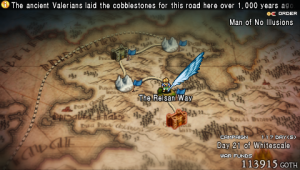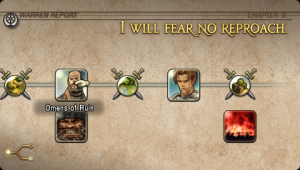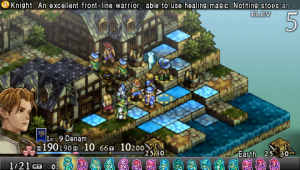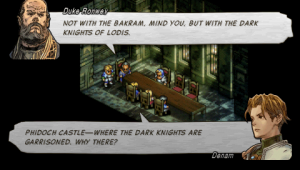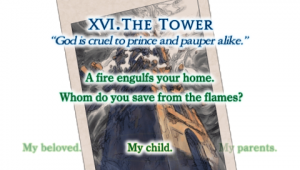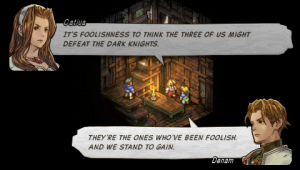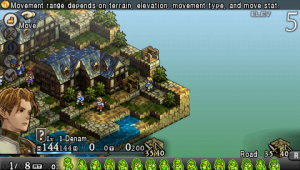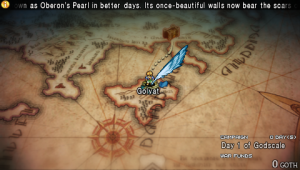Writing in 1991 on the eve of Yugoslavian dissolution, the academic Mihajlo Mihajlov remarked that, “In polyglot Yugoslavia, the triumph of nationalism will lead only to the ruin of nations: to civil wars and bloodshed such as Europe has not seen for more than a generation.” After the death of its leader, Josip “Tito” Broz, a purportedly non-partisan dictator, the enforced peace between the Serbian, Bosnian and Croat peoples of Yugoslavia fell apart – centuries of enmity boiled over as each nation asserted its autonomy through fighting the other.
The civil conflict triggered Matsuno’s interest, and served as the inspiration for his allegory, Tactics Ogre: Let Us Cling Together. Reflecting that gamers may be ready for a story that tackles the atrocities of war intimately, he set upon his creation of the darkest narrative in the Ogre Battle Saga, focusing on the subjects of ethnic nationalism, war crime and political liberation.
After centuries of fighting for dominance of the Valerian islands, the Gargastan, Bacrum, and Walstanian peoples were forcibly united by King Dolgare. After a quarter-century of peace, the king dies without leaving an heir. Taking advantage of the power vacuum, Hierophant Barbatos proclaims the independence of the Kingdom of Gargastan. As the nationality with the greatest numbers, Gargastan begins a campaign against the Walstanian minority, wiping out villages and conscripting forced labor to feed its war machine. Concerned over Gargastan’s ambitions, the Bacrum – traditional elites of Valerian society – ally themselves with special forces from the Holy Lodis Empire and isolate themselves in the capital region. In the face of oppression, Duke Ronwey forms the Walstanian Resistance to fight for freedom. When the Duke is captured by Gargastan troops, young soldier Denim Powell, his sister Kachua and best friend Vice spearhead the rescue operation, and begin their journey into history.
Characters
Denim Powell
The hero of the game – in the classical sense. No matter his choices, finds himself painted as a demon despite his virtuous intent.
Vice Bozeg
The archetypical best friend of the main character, urges his comrades into more drastic actions for the sake of the cause. Essentially the precursor to the Delita/Ramza dynamic.
Lans Tartare
A knight from Lodis who leads their forces in Valeria. More or less embodies the political ideology of realism. An interesting character, as he comes off as amoral more than anything else.
What follows is a literate take on power politics and personal drama, conveyed beautifully through its medieval setting. It deconstructs the symbols and popular conceptions over what makes a tyrant and a freedom fighter what they are. The masks of perception and presentation, the labels of oppressor and victim are demonstrated to be just that. This is a story about characters who try to be heroes and learn the bloody way that they’re always someone else’s villain.
More so than its predecessor, Tactics Ogre conducts a serious examination of the ramifications of the player’s actions. Schemes play out, and stratagems are put in motion as Denim faces pitched battle after pitched battle, rolling a boulder up a hill as he deals with the fallout. Appropriately, its telling of a bloody campaign is paired with gameplay of legendary difficulty.
As an SRPG set in a medieval European-influenced world, the comparisons to Fire Emblem and chess are unavoidable. While these venerated hallmarks are the most obvious influences, it certainly has its own flavor. Like those games, the positioning of units is key. Proper defensive formations and offensive maneuvers are mandatory. You can control up to 12 units in battle at once, along with up to two “guest” characters who act on their own accord. Winning comes from controlling the board, of course. This especially matters due to the importance of unit facing, a system used in nearly every SRPG since. Attacks to the front of a unit have a much lower chance of hitting than those to the side; all attacks are instantly counter-attacked, unless made to the rear, which are almost always sure hits. Formations are thus key to succeeding, and the player finds themselves using classic military tactics: establishing a front, flanking the enemy’s vanguard, catching a foe in a pincer. It’s ultimately an elegant experience. The ultimate goal in each level isn’t always to kill everyone, but often just to focus on the enemy leader.
Among the major ways it differs from the two is in turn order and terrain. Rather than turn order being determined by the color of a piece, the agility stat sets the pace. This is further modified by the “Wait” parameter; movement and actions bring the Wait rate up until the next turn, while choosing to pass will lower the Wait until that character’s next turn. Terrain is not a mere flat grid, but is depicted as if it were an environment, with a grid overlaid upon features like mountains and roofs, speaking to the important part elevation plays in battle. Since turn order is not determined by a combatant’s side, this adds a lot of fluidity to battle. One finds themselves in “best laid plans go awry” situations, and part of the fun comes from trying to keep it together. Stages thus evolve, as it’s not just about the plan of attack, but being creative and figuring out how to counterattack.
Terrain features often dominate what sorts of tactics are used. Using the environment to your advantage is critical, as stages often start with the player in a poor position. Figuring out the means to surrounding the enemy – or winning when you can’t help but be surrounded yourself is a constant challenge. Controlling defensible positions and entrapping the enemy are compounded difficulties; factors like holding the higher ground, maintaining the line on a fortress wall, or preventing a water crossing always come into play. Furthermore, weather affects accuracy of attacks and effectiveness of magic.
This is entwined with the statistical properties of units. Elevation especially matters, as units can only move “up” by as many squares as their “Jump” stat dictates. Moreover, having the higher ground in melee and ranged assaults will boost accuracy. For archers, attacks from high elevation are even made stronger, to simulate gravity’s effect, making them an infamously powerful class.
Class types distinguish the roles units play. Each has strengths, weaknesses and loopholes and lay the groundwork for which formations and tactics are used. As abilities grow, so too do the considerations for battles. For instance, when magic users gain AOE attacks, they can cut right through static formations – yet they can easily be picked off by a sniper.
Other stat properties dramatically influence how the game is played. Movement of units is based on their “Move” stat – which is based upon equipment weight. Intuitively, heavy gear has higher defensive properties, and lighter stuff tends towards higher dodge rates and “Move” stats. Most units are slowed by wading through water, cutting their range by many spaces. Individual terrain types and character units all have elemental affinities, simultaneously buffing and debuffing their corresponding opposite’s power. Essentially, there are enough factors involved in character customization that almost as much time is spent off the field tweaking them to be just so.
Generally the balance is masterfully maintained throughout the game, as the player and AI gain an ever expanding toolkit fight it out with. But it can still be an extremely frustrating game. The most egregious example – once a character is killed in combat, they’re dead. Permanently. You get the ability to resurrect fall soldiers late in the game, but in the early stages, you’ll probably find yourself losing soldiers then having to recruit and train more of them. And because they begin with no experience, it’s often advantageous to have the soldiers attack (or throw rocks) at each other, if they’re not in the range of an opponent, just to collect the experience points.
One of the most interesting features is the “Warren Report”. It’s an in-game encyclopedia of the islands’ social dynamics, political history, character profiles and current events that updates in tune to plot revelations. Plus, it allows you to watch replays of nearly all cutscenes, something that was pretty much unheard of in 1995. Also, always in the play is the unseen “Chaos Frame”. Rather than the displayed “Reputation Meter”, all your choices are weighed towards paths the plot can take and ultimately which ending happens. Denim’s alignment affects not only which unique characters may join, but also, in rare cases, drive generic characters to desert. This makes the first playthrough especially intriguing and multiple ones particularly rewarding, seeing the different angles the story can take.
The character designs are again handled by Akihiko Yoshida. Their portraits carry emotion, forming a nice juxtaposition with the sprites they are assigned to. Whereas Ogre Battle‘s designs were more cartoony, these fall more in the classical realism school, underlining the weight of the story. Development took months longer than anticipated, due to the character animations. Matsuno wanted it so that when a character swung a sword, they really swung a sword (as opposed to other RPGs on the SFC where sprites would just kind of wiggle and flash during attacks). Characters pull back, and put their weight into it when dealing blows. Every clash has an impact to it.
As with the previous title, Matsuno involved himself heavily in advising Sakimoto and Iwata on their compositions, to the point where Sakimoto felt the pressure to have the songs live up to the story. He reflected in a 2009 interview that, “Tactics Ogre, which followed, actually required more work. I put all of my passion into it, too. Tactics Ogre had a rich, meaningful storyline and was very dramatic. You’re faced with these severe choices, like having either to assassinate someone or see your family killed. Here it was even more crucial that the orchestra be in service to the drama.”
It shows. Tracks like, “Notice of Death” carry a great impact. Seemingly forlorn and subdued, it builds to a crescendo of great sadness, almost serving as a metaphor for the story as a whole. Battle themes like “Avilla Hanya” and “Vendetta!” are ominous and exciting, yet flow as pieces of the landscape (fitting with Sakimoto’s views on BGM, compelling enough to stick in the mind, yet not so overwrought as to take precedence over the gameplay). One of the greatest songs is “A Cygnet”, a stringed arrangement which hits all the right notes to tug on the heart.
Tactics Ogre was hit when it was released in Japan, and its quarter-view perspective came the de-facto style for many subsequent SRPGs. As with most similar games of the time, though, it was not deemed suitable for an English publication.
Beyond the initial Super Famicom release, Tactics Ogre was ported to both the Saturn and the PlayStation. They were developed by different studios – Artdink worked on the PS1 port and Riverhillsoft did the Saturn port – and thus share a significant number of differences. Since the PS1 supports the same resolution as the SNES (256×224), it looks identical. The Saturn cannot use in this resolution and ups it to 320×224, which results in a slightly thinner display. The cutscenes are pillarboxed, however, during gameplay, the maps make use of the expanded screen real estate for a larger view.
The sound in the PS1 version is somewhat off. Similar to the PS1 ports of Final Fantasy V and IV, and Chrono Trigger, it seems like the developers tried to convert the music as directly as possible from the SFC game. It sounds alright on its own, but when compared to its source, it sounds rather strange. In comparison, the Saturn version has entirely rearranged music which sounds much richer than the either SFC or the PS1 version. The Saturn version also has voices during the most important cutscenes. The PS1 version has redone sound effects, but the game stops for a second every time it needs to load a new one. This has a degrading effect on the pacing of combat, as you attack an enemy, the game completely freezes momentarily, and then the game continues when the sound is played.
The SFC and Saturn versions have temporary mid-battle saves that will be erased when re-loaded (though technically for the Saturn you can quit the game then copy them onto a memory cart). The PS1 version offers permanent mid-battle saves on the memory card. The Saturn version has an art gallery called the Deneb Report. It also has a glitch that lets you use the Ogre Blade’s BodyGrab ability to obtain any enemy leader.
It’s pretty clear that the Saturn version is not only better than the SFC original but a substantial improvement over the somewhat sluggish, cheap PS1 port. However, the PS1 version was the only one initially released in English, published by Atlus. It came out a few months after Final Fantasy Tactics, and was largely ignored by the public thanks to its weaker graphics and lack of a well-known license. The Super Famicom version was fan-translated by Aeon Genesis, though it uses the script of Atlus’ PS1 version.
All versions of Tactics Ogre include a sound test, enabled by the screen where you name the main characters. It’s more amusing than most, because it offers comical, alternative names to all of the songs, along with silly commentary by the composers. For example, the track “Fog of Phantom” is called “Toilet Lock” (in English) or “The Night I Couldn’t Go to the Bathroom” (in Japanese). Along with this dark and stirring track is a note from Masaharu Iwata that he conceived on this theme during a stressful night in the bathroom. Final Fantasy Tactics also included a similar sound test, though it was removed from the English version. As with Ogre Battle, both the SFC and MIDI versions of the soundtrack are included on the initial three disc soundtrack release.
Tactics Ogre: Let Us Cling Together / Tactics Ogre: Unmei no Wa (タクティクスオウガ 運命の輪) – PSP (2011)
The 2000s and beyond have seen a surge in reboots, remakes and re-imaginings across popular media. This approach to creative/commercial output is fraught with risk, as “the original” is often worthy enough in its own right – which is the very reason new renditions are made; lightning might strike twice.
2011’s PSP version of Tactics Ogre: Let Us Cling Together, subtitled The Wheel of Fortune for the Japanese release, successfully transitions a classic title into modern form. The attention put into this work honors the first iteration, while still introducing enough to warrant calling it a different game. Its aesthetic innovations serve to make an already beautiful game shine, while gameplay changes add different layers to the battles. These additions actually subtract a little from the essence of Tactics Ogre, altering many of the nuances involved in planning your moves. Nonetheless, without these modifications this edition would more closely resemble a port with a nicer coat of paint. While the 1995 version remains arguably a superior game – in terms of strategic challenge – the PSP version is fantastic, bringing a lot of interesting things with it.
Critical to the project’s authenticity lies in the re-assembly of the original team. Lead designer Matsuno returns to the helm, along with character designers Akihiko Yoshida and Hiroshi Minagawa. The musical duo of Sakimoto and Iwata, along with other former Quest employees assimilated into Square Enix, round out the development staff. The result is an incredibly polished experience. Matsuno’s tragic tale is imbued with a greater ambiance thanks to heightened production values.
The script has been reworked by Matsuno and company, containing many new scenes, conversations and quests. Discovering these treasures is one of the best parts. The duels between fated rivals and mortal enemies are strengthened by the new dialogue. In this sense, it really is the definitive version of the story.
While it can be stressful in an Ogre title to try for the “best” ending and recruit all your favorite characters in the same playthrough, in the PSP release access to the “World Tarot” is opened after completing the game. This system enables you to revisit pivotal events throughout the timeline of the playthrough and make new decisions, ensuring no diamonds get lost in the rough.
In the original game, despite the compelling plot, many moments of dramatic tension fall flat, and concepts are occasionally cloudy – due to the poor localization of the script for the PS1 port (whose text was dumped into a popular SFC fan “translation”). However, here Alexander O. Smith and Joseph Reeder handle the translation duties, and their work allows the story to speak to the player. Yes, ideas and dialogue are rendered in formal vernacular, true to the medieval setting – yet it is carried smoothly. It’s similar to the dialogue in Wolf Hall by Hilary Mantel, a novel about political intrigue and backstabbing in 1530s England. It’s all in the delivery.
A new translation also means new names, as it is also a new transliteration, putting the characters and places in a different context. For instance, Griate is now Golyat, Aloser is now called Arycelle, and Denim is dubbed…Denam. It may be jarring if one is familiar with the previous spelling, but in many cases they improve upon what was used in service to the whole (“Xapan” is certainly more badass than “Zapan”).
Character portraits play a prominent role in the presentation of dialogue, helping to humanize their struggles. It has been a hallmark of the series to present hyper-realistic character portraits in dialogue bubbles contrasted with simple, almost super-deformed 2D sprites representing the characters in-game. The artistic effect works; weighty political concepts are covered, yet it’s “only a game”. In this version, the choice was made to depict the characters at almost a “middle-ground” between pure realism and looking kind of manga-esque, like Yoshida’s work in Final Fantasy XII. Intermingled with his portraits are those by artist Tsubasa Masao, whose style compliments Yoshida’s perfectly. Their distinctive designs take up a huge chunk of the screen when characters speak, and word bubbles are now rectangular and blocky, with font in all-caps like a comic or the cutscenes in Vagrant Story. Again, it works: branching paths and heavy decisions in the story are magnified, as it really does feel like an interactive graphic-novel.
A completely remixed soundtrack is one of the strongest points of the release. Sakimoto’s production company Basisscape joined him and Iwata in updating the score with modern technology. The synthesizer samples used are good enough to be mistaken for actual instruments. As good as the original MIDI tunes are, hearing the tracks again in a high quality audio format relays how powerful the compositions are. Catchier tunes become that much catchier, and the heartbreaking stuff all the more poignant.
Aside from being another Queen reference, the subtitle of the original release, Let Us Cling Together, refers to the operative gameplay mechanic. A group of individual soldiers must fight as one unit to survive; characters are used effectively in their specific roles to help the group, or they’re killed off. The remake allows for a greater margin of error in battles, which ensures less tedious play if you fail, but also takes away from the tactical beauty of it. For instance, characters may now move after attacking. Before, attacking the enemy ended the turn. This means positioning and formation are not as critical – as one can use hit-and-run tactics to circle around powerful foes. Granted, the first game isn’t a case of static formation vs. static formation, but this added fluidity can mean less calculating and more fleeing.
Additionally, during raids on fortresses, health recovers completely between fights. Previously, HP at the end of a battle carried over to the organization screen afterwards. It was a cool feature, and meant managing troop strength over consecutive fights, requiring planning for a series of battles and team planning for the long haul. Conversely, it can prevent you from getting screwed over and dooming the subsequent matches if your team’s health is too low. Plus, this makes them less “dungeons”, and more stages taken together as a set. On the other hand, there are now bonus “dungeons” in the vein of Hell’s Gate added.
Added control over camera angles is a major improvement. The Wheel of Fortune allows a switch from the default isometric view to a bird’s eye view. This is a radical change, as it enables a full view of unit positioning vis a vis enemies’ positioning, along with being able to see precisely which places are affected by AOE attacks. Previously, with a static camera, terrain and the characters themselves could block the view of the field, leading to missed attacks and miscalculation. This camera angle essentially makes maps look like colorful chess boards, really emphasizing the similarities.
The harshness of permadeath has also been reduced. Now, characters may be killed off, but there are several chances to save them beforehand. From the outset, revival items can be bought to raise killed characters from the dead. Just like in Final Fantasy Tactics, there is a three turn count to raise them before they pass away. Even if they aren’t reached in time, they only lose a “life”, like in a platformer. Characters now have three lives, and only once they’ve been killed three times do you lose them forever. Yet no player will even get to that point, as save scumming is built right into the game. Simply press “L” to activate the “Chariot Tarot”, and you can rewind up to fifty turns. While the “Chariot” is a welcome addition, preventing players from having to start a stage over if they make a mistake, the other methods to save characters are redundant, and discourage the cautious planning of moves.
There is also an intensive focus on character customization via new skills. Originally, skills were scarce and either restricted to classes via their regular abilities or held by special characters; now, characters may learn a plethora of abilities to improve. These range from passive stat boosts available to every class, to “finishing moves”, and interesting class-specific ones. They can turn the tides of battle quickly. Initially, this aspect seems to, again, make things too easy. Yet there are several mitigating factors that help preserve balance. Enemies themselves can learn from the entire range of skills, so the player is forced to learn how to offset these advantages by building their own. There is also a limit of ten skill slots. However, it doesn’t go in the direction of Final Fantasy Tactics by making every character customizable ad infinitum; Terror Knights can’t heal, for instance. Characters are nearly handicapped without them, in some ways starting off worse than they did in the 1995 version. Where once every character could counter any direct physical attack, now counter-attack has to be learned and assigned as a specific skill. Attacks are much weaker and inaccurate without learning the corresponding stat boosts. What this means is that it preserves the feeling of building a team from the ground up.
Every learned spell can be used at any time during battle, whereas before, only four spells at a time could be equipped. This takes away from the micromanagement aspect. It’s no longer necessary to prioritize techniques as limited resources, as they can be drawn from a gigantic pool as needed.
The experience system has been completely overhauled. Characters no longer gain experience individually, and instead, classes as a whole do. This leads to a lot of considerations when it comes time to leave someone on the bench. If there are multiple characters of the same class, and some are left behind, they may all gain experience from a battle, but only participants receive skill points. So the player must decide whether to invest entirely in their most powerful characters, or rotate fighters to spread skill growth across the team. The nature of the game favors a balanced party, so this is a good mechanic to discourage power-leveling two guys.
Tied to this is changing classes and how it affects growth. The first game required high enough stats in certain disciplines and the right character alignment to change classes. In the remake, only items called class marks are needed. When used on new classes, they reset characters to level one. This encourages the player to build their team to their strengths, rather than making esoteric combinations of skills.
Crafting has now been introduced to upgrade gear. This involves having a recipe book and the required materials, which can be purchased or acquired through enemy drops. Gear requires multiple recipes, and multiple components to craft before the base ingredients are assembled. With all the shuffling between collapsible menus, it’s about as tedious and addicting as it sounds.
The 2011 remake of Tactics Ogre thus adds many layers of micromanagement to an already complex game. While battle can be made less difficult due to this, there’s enough going on behind the scenes to challenge players while preparing for the next fight. Extra abilities for characters and the like don’t diminish from the core game substantially, and optimization through specialization was already a staple of the series to begin with. Its additions even make the process of building a squad more addictive, leaving the player with a craving for another session as soon as the last ends. It doesn’t hurt that the story’s presentation is even better this time around, and any effort that calls attention to one of the greatest turn based strategy games can only be a good thing.
Oftentimes, players lament the lack of depth to be found in games today – the stories don’t hold up, the gameplay isn’t as tight. In this case, that sentiment’s exactly right: it’s hard to touch a masterpiece.
Screenshot Comparisons
